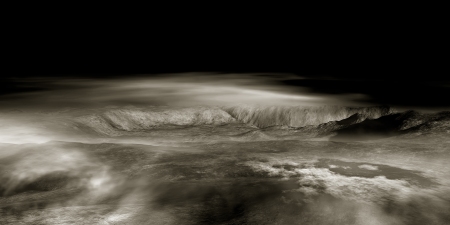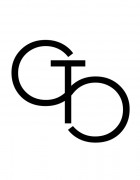When in 1919 Freud developed the concept of the ‘uncanny’, he dedicated a long part of his dissertation to clarifying the etymology of the term and its translation from the German ‘Das Unheimliche’ into other various languages. The numerous acceptations of the original German word and the impossibility of finding a comprehensive definition brought Freud to classify different types of the ‘uncanny’ and leave the matter open to further specifications.
The variety of shapes that the term can take, linguistically and conceptually, makes the ‘uncanny’ an enigmatic ‘label’, subject to personal interpretation and therefore not easy to apply. The relation to the term ‘uncanny’ in Magical Surfaces: The Uncanny in Contemporary Photography at Parasol unit foundation for contemporary art responds more to the intention of proposing a catchy expression than of creating a systematic reference. The curator made use of the concept as an indistinctive frame which contains very different outcomes. The result is an exhibition that, as a complex system of theoretical allusions, touches upon many other themes.

Sonja Braas, You Are Here #5 (1999)
The show aims to cause an interference with the common perceptions and, placing the viewers in the position of undertaking an emotional experience, it draws a connection to the philosophy of the photographic ‘spectator’ that was defined by Roland Barthes in his essay Camera Lucida. In 1980 the French philosopher formulated a meaningful definition of that effect that at Parasol unit is called ‘uncanny’ and in his system is named ‘punctum’.
Barthes refers to the ways viewers develop an interest in a particular image, and place the ‘studium’, “that very wide field of unconcerned desire, of various interest, of inconsequential taste”[i], in contrast to the ‘punctum’. The ‘punctum’ represents what makes a picture poignant to someone, “that accident which pricks me”, a detail that “attracts or distresses me”[ii], in Barthes’s words. Even though for the French critic the ‘punctum’ in an image is what creates a very personal and, at first, unconscious or unpredictable reaction in the viewer, the selection at Parasol unit presents a wide array of ‘punctum’ insofar as it doesn’t seek a sensational or surprising effect (what Barthes calls ‘shock’) but it performs its disturbance making use of discreet details.
A reference to Bernd and Hilla Becher and their philosophy of a detached and objective vision is present in many authors exhibited at Parasol unit foundation for contemporary art. Elger Esser and Jörg Sasse studied at the Kunstakademie Düsseldorf under Bernd Becher. At the Londoner foundation they show images where soundless landscapes convey a strong sense of alienation and feeling of the sublime.

Julie Monaco, MC 01.05 (2006)
Belonging to an older generation of photographers the Americans Stephen Shore and Joel Sternfeld employ different techniques to provide a personal vision on the environment we live in. They are both pioneers in colour photography and the brightness of their images’ tones help their pictures to access an almost surreal dimension.
The inclusion of an artist like Julia Monaco, whose work is entirely created digitally through a fractal algorithmic software, raises questions about the legitimacy of reading images produced without a physical reference to reality using the same theoretical and semiotic tools formulated to comment on analogue photography.
The continuity between the pictures hung on the walls is interrupted by two video installations by the multi-media artist David Claerbout. Making use of technology he explores the tridimensional dimension represented on the two-dimensional photographic surface. The video King (after Alfred Wertheimer’s 1956 picture of a young man named Elvis Presley) visually brings the viewers to close proximity to Elvis’s semi-naked body. The way the gaze slides on Elvis’s skin and revolves around his body his highly unsettling, not just because the spectators are required to enter someone’s private-ness but also because they can navigate in an almost tactile way the same space occupied by a dead legend.

Stephen Shore, Badlands National Monument, South Dakota, July 14 1973 (1973), printed 2014

Jörg Sasse, 2729 (2012)
Magical Surfaces: The Uncanny in Contemporary Photography is on until 19 June 2016 at Parasol unit foundation for contemporary art.
Angela Pippo
Angela Pippo is a curator based in London. She completed her MA in History of Art in 2013 in Milan and she is currently attending the MA Curating the Contemporary at London Metropolitan University and Whitechapel Gallery. She collaborated as researcher and grant recipient with international institutions such as the Antonio Ratti Foundation (Como, Italy) and the Institute of Contemporary Art (Sofia, Bulgaria). Her past curatorial experiences include: Concrete Matters, 3 – 19 March 2016, Bank Space Gallery, 59 – 63 Whitechapel High Street, London. Through The City, February 2016 – February 2017, The Blithehale Health Centre, Bethnal Green, London. 217 Stangers/ Hao Xu, 8 May 2014, the Anatomy Museum, King’s College, London (curated by 15Curators Collective)
Bibliography:
Barthes R. (1993), Camera Lucida, London: Vintage Book
Freud S. (1919), The ‘Uncanny’, Retrieved from http://web.mit.edu/allanmc/www/freud1.pdf
[i] Barthes R. (1993), Camera Lucida, London: Vintage Book
[ii] Barthes R. (1993), Camera Lucida, p. 27
Featured image: Joel Sternfeld McLean, Virginia, December 1978 (1978), printed 2003

